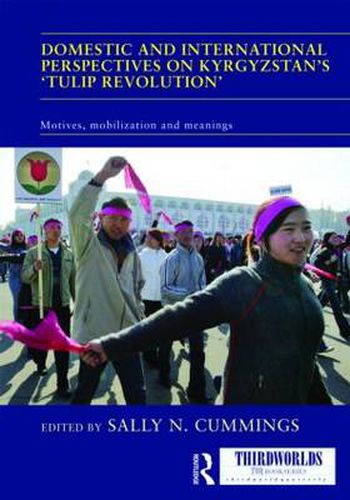Readings Newsletter
Become a Readings Member to make your shopping experience even easier.
Sign in or sign up for free!
You’re not far away from qualifying for FREE standard shipping within Australia
You’ve qualified for FREE standard shipping within Australia
The cart is loading…






In early 2005 regional protests in Kyrgyzstan soon became national ones as protesters seized control of the country’s capital, Bishkek. The country’s president for fifteen years, Askar Akaev, fled the country and after a night of extensive looting, a new president, Kurmanbek Bakiev, came to power. The events quickly earned the epithet ‘Tulip Revolution’ and were interpreted as the third of the colour revolutions in the post-Soviet space, following Ukraine and Georgia. But did the events in Kyrgyzstan amount to a ‘revolution’? How much change followed and with what academic and policy implications? This innovative, unique study of these events brings together a new generation of Kyrgyz scholars together with established international observers to assess what happened in Kyrgyzstan and after, and the wider implications. This book was published as a special issue of Central Asian Survey.
$9.00 standard shipping within Australia
FREE standard shipping within Australia for orders over $100.00
Express & International shipping calculated at checkout
In early 2005 regional protests in Kyrgyzstan soon became national ones as protesters seized control of the country’s capital, Bishkek. The country’s president for fifteen years, Askar Akaev, fled the country and after a night of extensive looting, a new president, Kurmanbek Bakiev, came to power. The events quickly earned the epithet ‘Tulip Revolution’ and were interpreted as the third of the colour revolutions in the post-Soviet space, following Ukraine and Georgia. But did the events in Kyrgyzstan amount to a ‘revolution’? How much change followed and with what academic and policy implications? This innovative, unique study of these events brings together a new generation of Kyrgyz scholars together with established international observers to assess what happened in Kyrgyzstan and after, and the wider implications. This book was published as a special issue of Central Asian Survey.